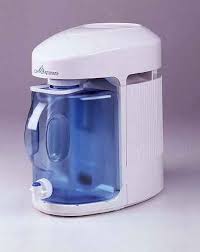So you are interested in juicing and have no idea what kind of juicer to purchase and have some questions before making a purchase. Well, read on to help clarify some of the questions we get here at Upaya Naturals.
1. What are the best reasons to juice at home?
– Instant fresh juice that has not been sitting on a store shelf
– You control what you put in it
– It is not pasteurized and has no added preservatives, sugars or fillers
– Instant shot of vitamins and minerals
– You can get your kids and family members involved in creating their own juice recipes
2. What are the differences between the types of juicers you carry?
a) Centrifuge – these have blades inside a basket that spins very fast. The blades cut up the food and the spinning action presses it up against the basket. The basket has small holes which allows the juice to go through, but not the pulp. These juicers are very load and sound like a jet plane taking off.
b) Single Auger or Masticating – These are slow juicers that use what looks similar to a tractor auger to chew up the fruits and veggies and press them up against a screen to extract the juice and separate it the pulp. Their are 2 types. The horizontal type and the vertical type – which correspond to which direction the auger is positioned. The vertical masticating juicers have only been on the market for about 5 years and are more compact than their horizontal counterpart.
c) Twin Gear -these juicers have 2 gears inside that are very tight to each other. The food is pushed between the gears and crushed then it is pressed against a screen to separate the pulpe from the juice. These are also slow juicers, meaning that the gears move less than 120 RPM and produce less heat and oxidation.
d) Juice Press – a press basically takes veggies which are first mulched and pressed them using a hydraulic press to squeeze out the juice.
3. What is each of the types of juicers best for?
Centrifuge juicers are best for juicing large quantities of fruits and veggies but excel mostly at juicing hard root vegetables and fruits. The masticating/single auger juicers do well with both greens and vegetables as well as juicing wheatgrass. Twin gear juicers are excellent for greens but need some added attention when doing soft fruits. Juice pressed are excellent for both greens and fruits and have the least amount of heat and oxidation when juicing.
4. Are there any drawbacks to centrifuge, single auger, twin gear and juice presses?
Each juicer has it’s own “personality”. For example the centrifuge juicer is the least expensive and produces a lesser quality of juice, takes the longest to clean and is not very efficient at juicing greens. The masticating juicers are good for both fruits and veggies but the vertical models are not recommended for juicing wheatgrass or fibrous greens. The twin gears are excellent for greens but not so great with soft fruit. The juice press is great for both greens and fruits and produces the highest quality juice but takes longer to put together and clean and costs the most. Regardless of the juicer types, it is always recommended to drink the fresh juice right away since that is when it’s packed with the most vitamins. The longer it sits the more it will oxidize and degrade.
5. For the beginner which juicer makes sense?
Although it really depends on what each individual will be juicing, we recommend the single auger/masticating juicers to most clients since they are the most versatile and best value. Most of them also come with attachments for making instant frozen sorbets, nut butters and also a have a pasta extruder tool.
6. If one were to juice at home, other than a good quality juicer, what equipment would you need?
You would just need a juicer and fresh fruits and veggies. That’s it – other than friends and family to share your creations with. What we recommend is making sure that the juicer is on your counter and not hidden away. Make juicing a daily routine and fun by creating new recipes and getting kids involved. When shopping we always ask ourselves what are we going to be juicing this week and purchase what we need. This way we are preparing ourselves mentally and have the produce ready to go.
7. If money is no object, what is the juicer you would recommend. What is the best budget juicer?
We would recommend the juicer that best fits your lifestyle and needs. More expensive is not always better if you are not going to use it. We recommend the Omega 8003, 8004, 8005, or 8006 as the best budget juicers. These are all single auger masticating juicers, that are quick to clean and compact.
If you are in the market for a juicer and are unsure of which one to purchase, feel free to contact Upaya Naturals. The staff will take the time to help go over your juicing needs and help you choose the right juicer for you. With over 25 combined years of juicing experience they walk their talk.






 Ingredients are very basic:
Ingredients are very basic:

